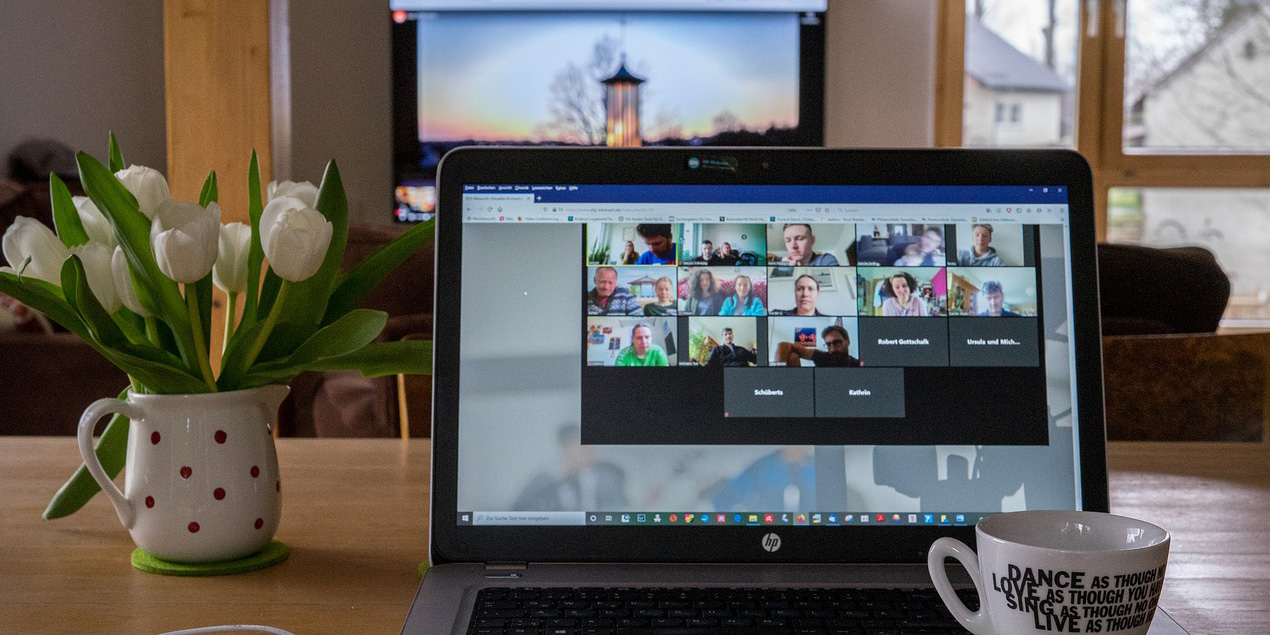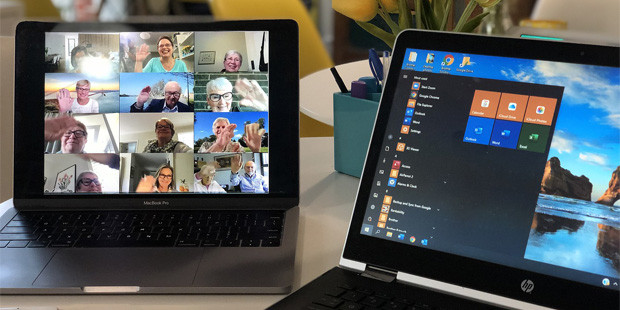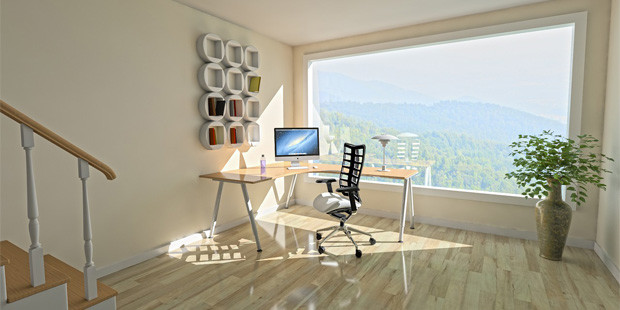10 Tips For Effective Video Conferencing

With the Coronavirus outbreak forcing companies around the world to shift to remote work setups, video conferencing platforms have become an essential component for businesses as they continue operations even during a pandemic. Technology has also been a key factor in making sure platforms cater not just to small businesses but also to large corporations. If you are new or looking for a refresher when using these platforms, here are nine tips that will definitely help you out:
1. Make sure to have a stable internet connection
Having a stable internet connection is the most important tip when it comes to effective video conferencing. Even if you have all the necessary equipment ready for your meeting but if the internet connection is compromised then no meeting can ever be accomplished. To help you obtain better connectivity, always used wired connections. Alternatively, you can also opt to get a better internet plan but it may be very costly. Take note that a better internet plan may not be a better option for you when it comes to price as plans with higher speeds are more costly, so do some proper budgeting first and check if you can really afford a new plan.

For wired connections, connect your computer to the router via an ethernet cable and ethernet adapter. If the cable isn’t long enough to reach either the computer or router, transfer the computer or the router within proximity of each other. To prevent transferring the devices every time you have a meeting, consider creating a workspace where all of the devices can be accessed within a single area. Wired connections have proven to be more stable than wireless ones since cables help prevent disruptions from other networks in the vicinity.
2. Select a proper video conferencing platform
Although Zoom is considered the most popular video conferencing today, there are dozens of platforms that individuals can use which are also as effective and as convenient. Whether you’re a business owner, a manager, or a rank and file employee, choosing the best conference platform is essential so that meetings are never compromised especially if conducted regularly.

Google Meet, Microsoft Teams, Cisco Webex, and Skype are other conferencing apps you can check out. Although some require an account, especially Google Meet, and Microsoft Teams, these Zoom alternatives are also free and can host up to multiple participants in a single conference room. If you are a business owner and planning to go for a pro or enterprise plan, check the features and the corresponding prices of the said conferencing plans and choose the one which best applies to your organization. Remember the platform you will be choosing should be compatible with any device and should ensure smooth video collaboration for everyone.
3. Check your video and audio settings
If your internet connection is now stable and you’ve chosen the right conferencing platform, it’s time to get familiarized with the video and audio settings. By knowing the ins and outs of your chosen conferencing platform, it will be easier for you to adjust settings on the fly if you encounter problems during the meeting. Also, remember that there will be adjustments that will be made from your computer especially when it comes to integrating your webcam and microphone into the conferencing platform.
Make sure all your devices are ready when they will be integrated into the conferencing platform before the actual meeting begins. The last thing you want to do is make some adjustments during the meeting which doesn’t only delay the meeting but also puts you in a very embarrassing situation especially if you’re on a call with clients. When it comes to best practices, it is ideal to budget around 15 to 20 minutes before the meeting begins so that you won’t have to worry about anything later on.
4. Dress properly
Even if you’re working from home, it doesn’t give you permission to dress casually during online meetings. Despite your current work conditions, remember that you are still a professional and dressing appropriately is still part of the job. Wearing a tank top during meetings can be disastrous for your company especially when meeting with external clients or stakeholders. There are some clients that can be easily turned off so if you don’t want to lose out on a deal you’ve been negotiating for weeks then don’t ever risk dressing down.
Dressing properly doesn’t have to pertain to wearing a full suit or blazer every time during a video chat. Although it is mandatory to wear formal attire during important meetings, wearing a button shirt (or dress shirts as some call it) is acceptable for any occasion. You may even apply light makeup but only do this if you have extra time to spare and if it's required by your immediate head. Maintaining a professional physical appearance even when working remotely can do wonders not just for yourself but for the entire company.
5. Limit activity while on a meeting
There is a reason why physical meetings are held inside special function rooms away from computers and other office equipment. This is because meetings are supposed to get the full attention of everyone involved and limit any form of distraction as much as possible. Even the most productive of employees can never properly listen to the speaker while he’s sending emails or creating spreadsheets at the same time.
The same rule applies to online meetings. Limit activity as much as possible and focus solely on the meeting so that you can follow everything that is being discussed. You may be faced with a situation where you get asked a question or a suggestion regarding a company-related issue and you don’t have anything to answer since you weren’t listening. Placing the pause button on whatever you’re doing can help you prevent this dilemma every single. But if you are indeed working on very important tasks, you can always ask yourself to be excused.
6. Get rid of distractions
Speaking of distractions, work-related distractions aren’t the only things stopping you from listening attentively and being active on conference calls. Your smartphone can be a distraction. Your gaming device can also be a distraction. Unfortunately, people in the household are classified as distractions especially if they become a disturbance when you’re working. If there is anything on your desk that isn’t related to your work, then it’s most likely a distraction that needs to be temporarily removed.

When it comes to physical devices and other non-office-related equipment, they are distractions that you can easily set aside when you’re in a meeting. As for people, on the other hand, inform them ahead of time that you will be busy in a meeting or you can also place a “do not disturb” sign on the desk or door if a non-scheduled meeting suddenly comes up. Children and older adults may not fully understand the extent of your online meetings so make sure to talk to them during your free time so that they can give you the space that you need while working. You can always spend time with them after the meeting or during the weekends.
7. Decorate your background
Working remotely can be tough, so why not add a little bit of color during your online meetings by decorating your background, whether it be a virtual background or the actual wall in your house? This makes meetings more entertaining especially if everyone has their own customized backgrounds. Management may even host a contest with the employee having the best background winning a reward.
Virtual backgrounds are easier to create compared to decorating your wall. You can easily download these backgrounds from the conferencing platform you are using, whether it be Zoom, Skype, or Google Meet, among many others. Backgrounds can also be downloaded from third-party developers with many being sold for free. As for decorating your wall, you have numerous options: adding a bookshelf, hanging portraits, or repainting your wall. Take note that this option can be very costly especially if you will have to purchase construction materials to accomplish the work. Also, your costs may be put to waste especially if you will be moving from one spot to another.
8. Have proper lighting
Aside from having a stable internet connection, having proper lighting is very important for effective video conferencing. It can be very frustrating for everyone in the virtual meeting to see someone who has a video option turned on but can be rarely seen. Your company may just switch to audio calls which just doesn’t fully maximize the capabilities of video conferencing platforms.

Having proper lighting has always been one of the more common ground rules for video conferencing, but this doesn’t have to mean installing a new lighting system. You can simply utilize whatever lighting you have in your bedroom or living room. If it’s still dim, purchase a small desk lamp that won’t cost you more than $10. Alternatively, you can use natural light especially if the meeting is held in the morning. The right amount of sunlight won’t just help you with your meeting but also give you some much-needed vitamin D.
9. Maintain proper etiquette even in online discussions
With more companies switching to remote work setups, video conferencing etiquette has become more important than ever. Video conferencing doesn’t give free rein to employees and management to ignore communication etiquette that is commonly observed in personal face-to-face meetings. Not interrupting the person who’s talking, introducing new members to the group, asking permission when temporarily leaving the meeting, and not involving in an unnecessary "word war" are just some of the video call etiquette that should regularly be observed.
Even with technology making it easier for colleagues to contact each other from anywhere in the world, it still doesn’t compare to when meeting personally. Not everyone is adept at using these video conferencing platforms which can make it difficult for businesses to be operated from purely a remote standpoint. In this case, a level of patience and understanding, and most importantly respect, should be observed by everyone so that meetings can be fruitful and productive as much as possible. Remember to respect rank and file colleagues as you would respect officers and top management executives as they are also contributing to making sure the company stays afloat during the pandemic.
10. Consider time zones
If you’re the one hosting the meeting, consider the time zones your employees are working in especially if they're situated in different locations across the globe. Hosting a meeting where everyone is agreeable to a specific time is one of the best yet most under-utilized video conferencing techniques. Management oftentimes underscores setting a meeting at any time or date, creating a problem for employees as they have to adjust to a certain time zone. This can even get worse if the meeting is conducted at a time where some employees are still supposed to sleep or have just woken up. Remember that this tip doesn’t just apply to employees working in different countries but also to remote employees working in the same region or country.

Alternatively, if you are the one attending the meeting always air out your concern if the meeting time isn’t accessible. You may be having another meeting with a client, finishing on some important tasks, or even taking a day off, so ensure everyone involved in the meeting is aware of your unavailability. Being unable to join without presenting a valid reason will never excuse you from attending and trying to cover up with a fake excuse is almost certainly never going to work.
Experts are saying that video conferencing is here to stay even after the pandemic has been contained. This is becoming more of a reality with more companies investing heavily in remote work assets. With video conferencing looking to define the future of full-time work, you should come prepared and the 10 tips for video conferencing from home listed above should definitely help you out.









